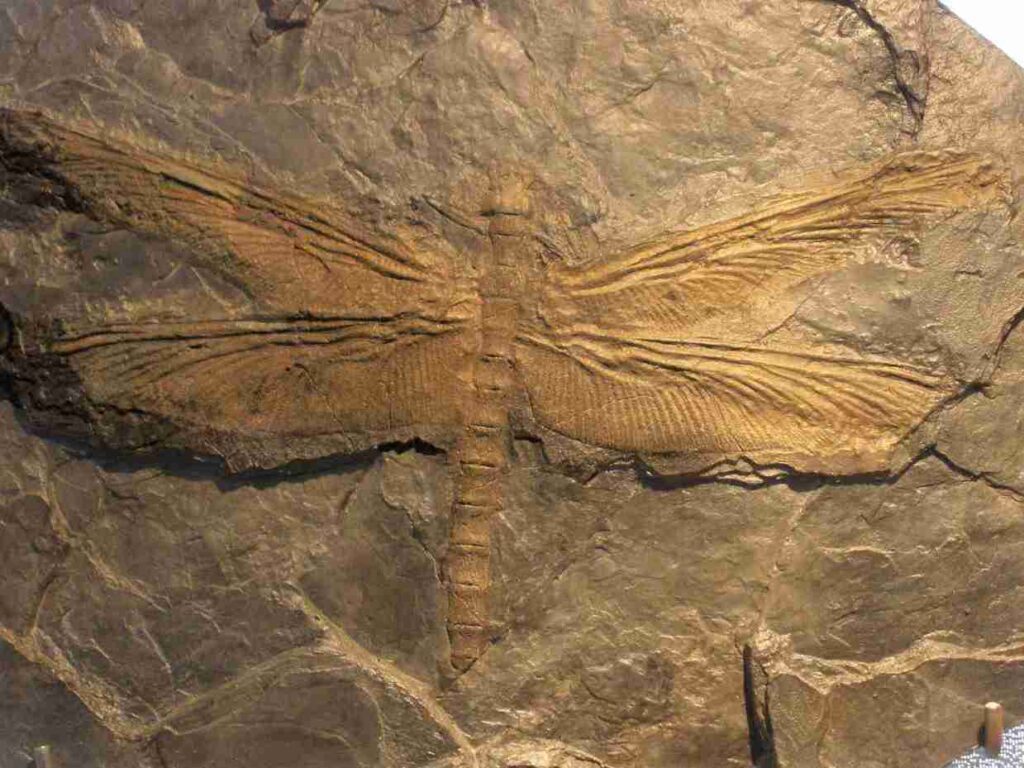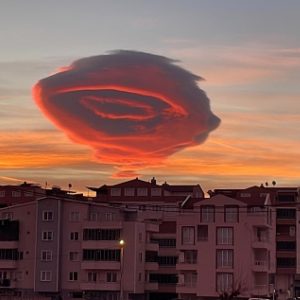Meganeura is a genus of extinct insects from the Carboniferous period (approximately 300 million years ago), which resembled and are related to the present-day dragonflies.
Its wingspans from 65 cm (25.6 in) to more than 70 cm (28 in), M.Monyi is one of the largest known species of flying insects. Meganeura was predatory and their diet consisted mainly of other insects.
Fossils were discovered in the French Stephanian Coal Measures of Commentry in 1880.

In 1885, French paleontologist Charles Brongniart described and named the fossil “Meganeura” (large-nerved), which refers to the network of veins on the insect’s wings. Another fine fossil specimen was found in 1979 at Bolsover in Derbyshire.
The holotype is housed in the National Museum of Natural History, in Paris.
The way in which oxygen is diffused through the body of the insect through its tracheal respiration system puts an upper limit on body size, which ancient insects seem to have far surpassed.
Harlé (1911) originally suggested that Meganeura could only fly because at that time the atmosphere provided more oxygen than the present 20 per cent.
This theory was initially rejected by fellow #oxygen but was more recently approved through further analysis of the relationship between the availability of gigantism and oxygen.
If this hypothesis is correct, these insects would have been vulnerable to declining oxygen levels and, in our current atmosphere, could probably not survive. Some research suggests that insects breathe with “rapid cycles of compression and expansion of the trachea.”
A recent analysis of modern insects and birds ‘ flight energetics suggests that both the oxygen levels and air density provide an upper bound on size.
In the case of the giant dragonflies, the presence of very large Meganeuridae with wing spans rivaling those of Meganeura during the Permian, when the atmospheric oxygen content was already much lower than in the Carboniferous, presented a problem for the oxygen-related explanations.
However, despite the fact that Meganeurids had the largest known wing spans, their bodies were not very heavy, being less colossal than those of many living Coleoptera; therefore, they were not true giant insects, only giant in comparison with their living relatives.
Other explanations for the large size of Meganeurids compared to living relatives are warranted.
Bechly (2004) suggested that the lack of aerial vertebrate predators allowed terygote insects to evolve to maximum sizes during the Carboniferous and Permian periods, perhaps accelerated by an evolutionary “arms race” for an increase in body size between plant-feeding Palaeodictyoptera and Meganisoptera as their predators.








